May 21, 2025 | 03:10 GMT +7
May 21, 2025 | 03:10 GMT +7
Hotline: 0913.378.918
May 21, 2025 | 03:10 GMT +7
Hotline: 0913.378.918
Coming to the land of O Long Vi commune, Chau Phu district, An Giang province, one can see that this is an area where rice cultivation is tackled with many difficulties. The soil is contaminated with alum coupled with the people’s traditional farming practice of thick sowing which leads to pest attacks. In the context that the price of fertilizers and pesticides is skyrocketing high, the profit farmers gain after each rice crop is usually below expectations.
Responding to a call for changes from An Giang Agricultural Extension Center, Mr. Cao Van Long An, a farmer in O Long Vi, joins the 2021-2022 winter-spring crop through a smart rice farming model adaptive to climate. He is now pleased to see the remarkable decrease in rice production cost after receiving the scientific and technical advances in rice cultivation transferred by experts.
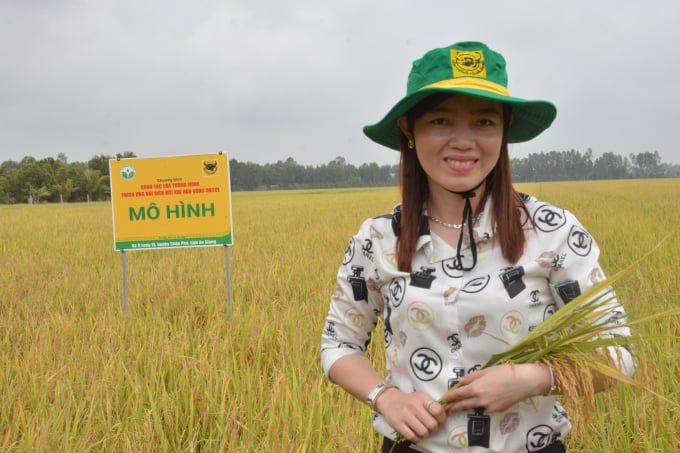
Smart rice farming model in O Long Vi commune, Chau Phu district, An Giang province. Photo: Ngoc Thang.
The cluster seeding model gives a yield of 7.2 tons/ha, 0.7 tons/ha higher compared to the sowing model, which is only 6.5 tons/ha (11% increase in production efficiency).
As for the profit, the cluster sowing model is capable of earning a profit of VND 19.4 million/ha, VND 2.4 million/ha higher than the profit of the free-fertilizing/sowing model currently which only reach VND 17 million/ha (14% increase in economic efficiency).
Mentioning the application of smart farming techniques in agroproduction, Dr. Mai Thanh Phung, Vice Chairman of the Vietnam Gardening Association (Vacvina), Vice President of Vietnam Farms and Agricultural Enterprises Association (VFAEA), pointed out that noone can do things in place of farmers if farmers do not actively apply the synchronous scientific and technical solutions themselves. "Farmers talk, farmers listen" is the most convincing way to ensure the realization of smart farming models and thus the highest profit.
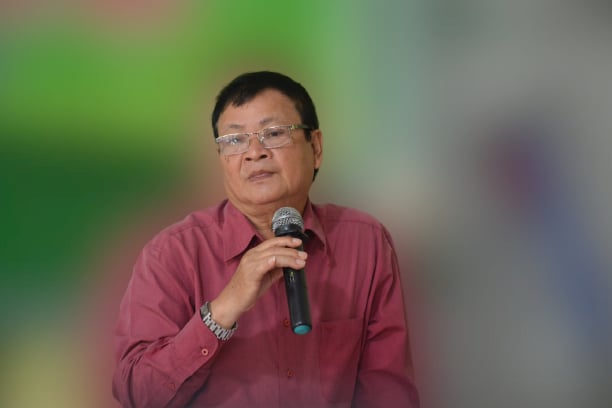
Dr. Mai Thanh Phung, Vice Chairman of the Vietnam Gardening Association (Vacvina), Vice President of Vietnam Farms and Agricultural Enterprises Association (VFAEA). Photo: Ngoc Thang.
“The smart rice farming program helps reduce fertilizers and pesticides. Cluster sowing also shows higher production efficiency, fewer pests and diseases. In the past, farmers wanted to increase production efficiency through the use of inorganic fertilizers and strong pesticides. But it would be unusual for rice plants to be so clean that no pests look for them. Pests and diseases in small numbers create an ecosystem for the field, which is the prey of natural enemies that are helpful to the crop. Changing the habits of farmers may not be done in a short time, but farmers should also take an active stance in finding more solutions that bring them the highest profits."
Smart rice farming models have been implemented by the National Agricultural Extension Center in collaboration with a number of units and enterprises in 13 provinces and cities in the Mekong Delta. The program aims to increase productivity, reduce production costs, increase profits for farmers and especially increase the initiative in smart farming against the impacts of climate change and the constant change of the market.
Up to now the program has implemented 294 models in five crops. The average rice yield has increased by 0.42 tons/ha (up 7.16%), production cost decreased by VND 1.42 million/ha (down 7.54%), profit increased by VND 4.45 million/ha (up 27,62). All models have shown good results and the figures are at a stable state over many crops considering the implementation of models is conducted in many different ecological zones.

Mr. Ngo Van Day, former Deputy Head of the Standing Office in the South - National Agricultural Extension Center. Photo: Ngoc Thang.
Mr. Ngo Van Day, former Deputy Head of the Standing Office in the South - National Agricultural Extension Center, said that through many experimental programs in the fields of farmers in the Mekong Delta, the sparse sowing and cluster sowing methods served as a great help to save the amount of rice seed required. Farmers were encouraged to apply these sowing methods in the 2022 summer-autumn crop.
"In order to increase crop productivity, farmers should not simply think about a single technical solution. They need to implement integrated technical solutions from tillage, seeding, fertilizing, sowing methods, and post-sowing care. Combining and harmonizing the methods will achieve the optimal result."
Translated by Samuel Pham
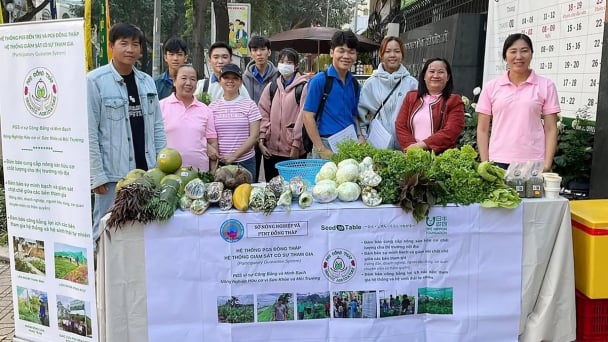
(VAN) Japan's grant aid project contributes to capacity building, promoting organic agricultural production, and fostering sustainable community development in Dong Thap province.

(VAN) For years, the CRISPR-Cas9 genome technology has been reshaping genetic engineering, a precision tool to transform everything from agriculture to medicine.
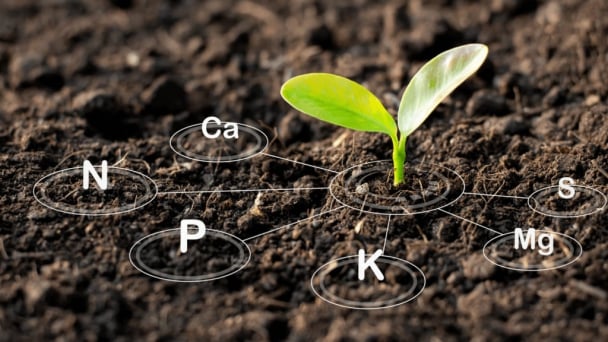
(VAN) Vietnam aims to become a 'leader' in the region in the capacity and managing effectively soil health and crop nutrition.
![Reducing emissions from rice fields: [Part 1] Farming clean rice together](https://t.ex-cdn.com/nongnghiepmoitruong.vn/608w/files/news/2025/05/05/z6509661417740_a647202949c539012a959e841c03e1d3-nongnghiep-143611.jpg)
(VAN) Growing clean rice helps reduce environmental pollution while increasing income, allowing farmers to feel secure in production and remain committed to their fields for the long term.
/2025/05/19/5136-1-144800_230.jpg)
(VAN) The Nghe An Provincial People's Committee has just approved the list of beneficiaries eligible for revenue from the Emission Reductions Payment Agreement (ERPA) in the North Central region for the year 2025.
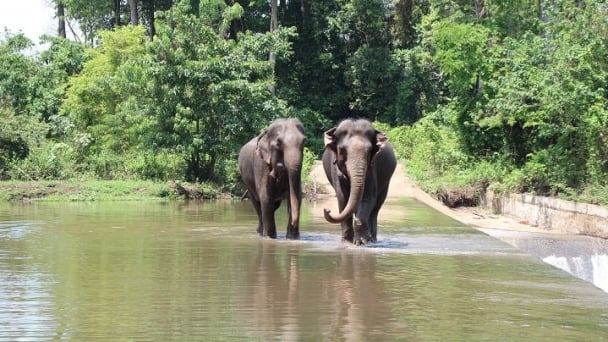
(VAN) 14 out of 35 domesticated elephants in Dak Lak province have had their living conditions improved, with 11 of them currently participating in the non-riding elephant tourism model.

(VAN) Muong Nhe Nature Reserve hopes that being upgraded to a national park will lay the foundation for forest protection efforts to be carried out in a systematic, modern, and sustainable manner.